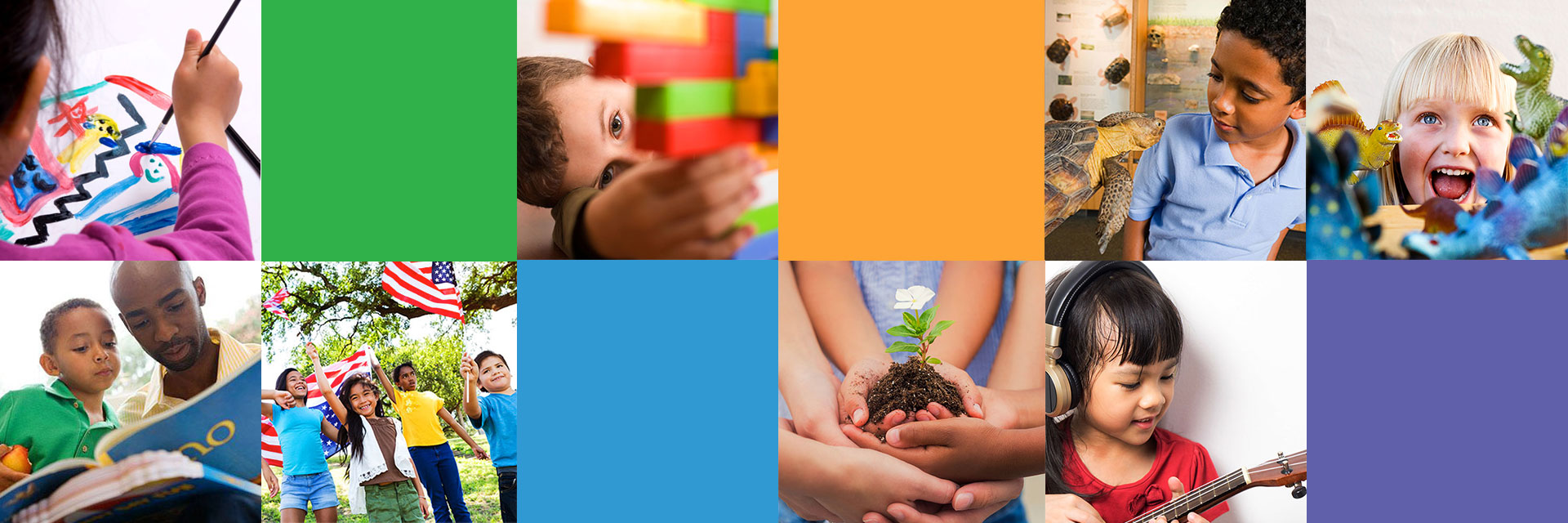In the southern West Virginia holler where I spent my childhood, I was often up with the sun in the summer to read on the porch swing and splashing in the creek every afternoon. Lately though, I’ve needed actual reminders to get out of doors every day. Some people and groups I follow on social media post simple outdoor adventures using #outsideeveryday which has propelled me on more than one occasion away from my screen for at least a walk around the block.
Clearly, I need help! And I’m thinking I’m not alone in this. That’s why I’m happy Reading Rockets has been sharing relatable resources like River Rangers and Bird Buddies to connect books and reading with other outdoor summer activities for kids and their adults.
And I’m so happy that April Pulley Sayre is here to share her ideas for embracing nature.
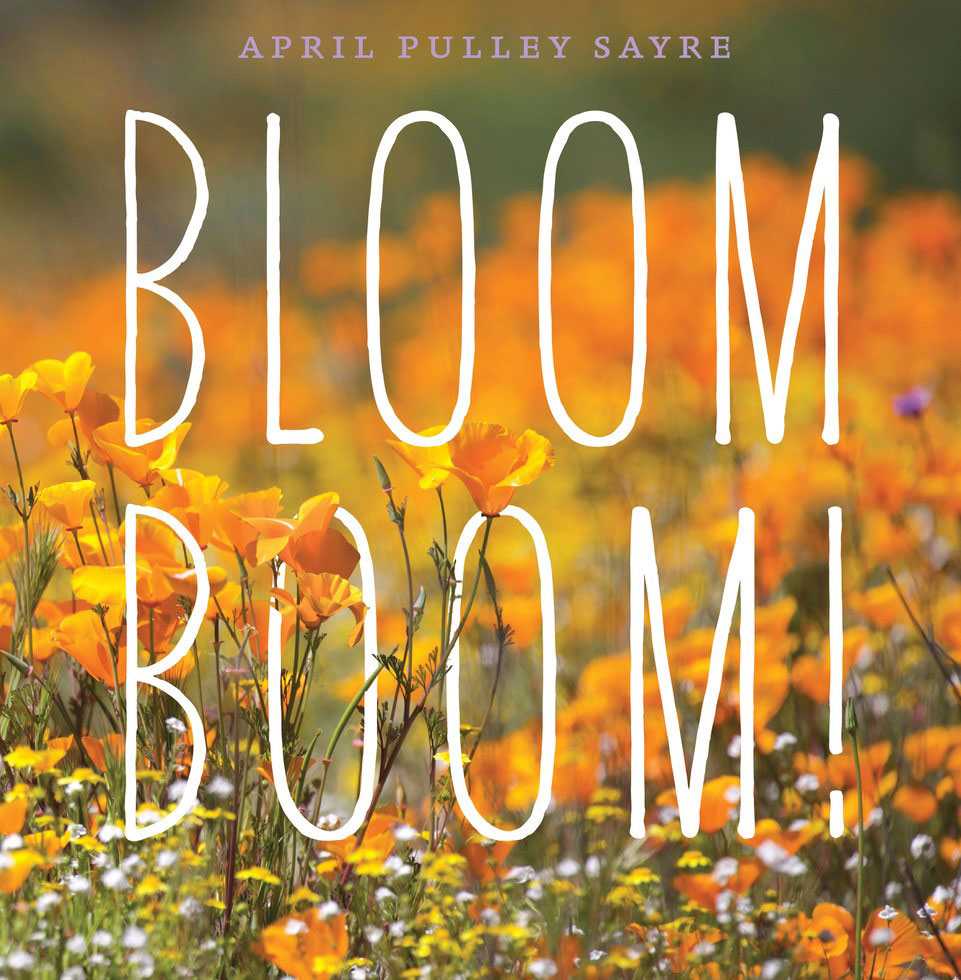
April is a photo-illustrator and award-winning author of more than 75 books including Bloom Boom, Warbler Wave, Full of Fall, and Thank You, Earth.
April knows how to get #outsideeveryday and in some of her adventures she has followed lemurs in Madagascar, pursued army ants in Panama, and eaten piranha in the Peruvian Amazon. She has a biology degree from Duke University, an MFA in Creative Writing from Vermont College, and travels to present on writing nonfiction, preschool education, literacy, and STEM.
June 30, 2021
Embracing Nature’s Shapes and Sounds by April Pulley Sayre
Spring and summer smack us in the face with bright colors and plant geometry. The world of leaves and flowers is full of math. It is such a great time to go on a shape or number hunt with kids in your life.
If you are chasing wildflowers and garden flowers, as we did for our book, Bloom Boom!, look for twos, threes, and fours. In a book or on the trail, have kids point out or perhaps even draw the numbers they find.
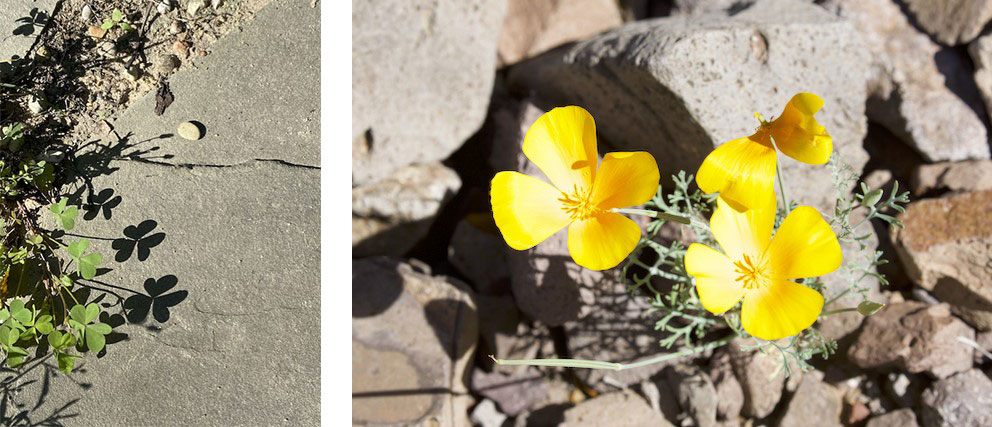
(Spring reminds me of threes because of the trillium species, which has threes in leaves and petals. Yet twos will pop up on all sorts of plants and are a natural lead-in for kids to the idea of symmetry. Threes and fours, of course, are readily apparent in poppies or lawn clover.)
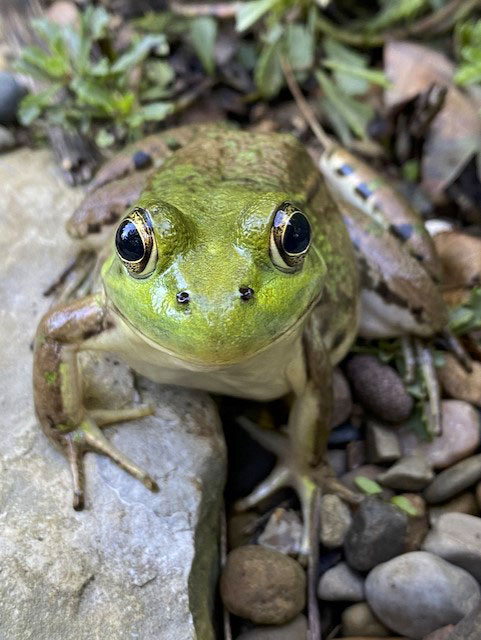
Once you have dipped into color and shape, prepare for the best meal: sound. I am always amazed when someone returns from a trail and has not found a thing. If I walk with them, it usually turns out that they have been stomping along, talking loudly. No wonder they did not hear the newly arrived warblers calling, or the distant frogs chorusing, or beaver chewing, or the quick crunch of a branch that indicates a deer is near.
A sound hunt can be a life-changing activity, whether you are in wilder green nature or a concrete school playground. Simply have kids or adults sit for five minutes and write down or draw what they hear. Try the same thing when walking. Do they hear shoes crunching, or wheelchair wheels rolling, or an engine humming? Do they hear the jingle of a dog leash or the drip drops of rain?
If you can, do this kind of listening in interesting weather. Trying to listen on a foggy walk is like having haiku unfold inside your ears. As I discussed in the end matter of Feel the Fog, air temperature and humidity impact the way sound travels. So does the shape of what is around you: be it canyon, or auditorium, or car windows, or a narrow stone hall, or a cathedral of tall trees, or a wide-open desert landscape. A first kind of exploration is to go and listen.
But sometimes making sound is part of the fun. Each student of sound can choose three brief sounds to test out. Perhaps a favorite word, a snatch of a song, a clap, a little bell, or two sticks that tap. Now, go on a sound walk and listen to how those words and sounds resonate in different environments. Draw and discuss what you find.
As I mentioned in my book, Warbler Wave, migrating birds call at night as they fly, often in patterns different from their typical daytime calls and songs. Go out at night and listen during migration and you may hear these faint calls in the sky. Any time of day, you can put on “bat ears” made by cupping your hands around your ears to make their receiving dish larger. Use this to locate a sound — it really works! It is great for hearing frogs in a distant pond. (After these explorations, you can search for the echoes of nature sound in poetic picture books via alliteration and onomatopoeia.)
Diving into nature with these kinds of new and squishy methods is one way to refresh our nature connection. But don’t forget to throw away the lesson plan and leave some time for just BEING in nature. (Sometimes we have to trick our TO DO list minds with agendas and plans to get out there. Then, if spongey openness calls, set the rest aside.)
If daily life has uncoupled you and yours from nature connection, a picture book reading may be a good way to warm up the mind. Being Frog is steeped in thousands of hours of my just being with frogs, as an entryway to the quieter world. My “Weather Walks series” (Raindrops Roll, Best in Snow, Full of Fall, Feel the Fog) grew from my own walks, and my life goal to share nature wonder in all its drippy plippy slishy slushy foggy boggy wonderfulness. Photographing the books helped me step out the door in any weather and I hope they will do that for readers, too.

When I was working on this blog post this spring, my husband came in the room and told me to look outside. I gasped. It was snowing. As a snowtographer, I never miss snow. He told me it had been snowing for a whole hour. Oops. You mean while I was telling others to set aside the TO DO mentality to get out in nature I was missing this natural event? Oops. Suffice it to say that however awakened we are, we all need that messenger to remind us of the outer world. Of course, I rushed out to see it settling on those blooming redbud trees, daffodils, and white-throated sparrows.
So, here’s a reminder for the reader and, apparently, myself: studies show that time in nature, even a few minutes in green spaces, and especially areas with water, help lift the mood of children and adults. So, go! It’s okay to let ourselves be bored a little, to let curiosity unfurl, to let unanswered questions float without checking a search engine on the phone. We have to open a space so that nature experiences can arrive on soft rabbit paws, or maybe wet frog toes.
To support nature experiences, go out in many kinds of weather, if possible. Stock up on nature picture books, of course. If possible, build a family/classroom/local library of quality field guides to nature, such as the Kaufman Field Guide to the Nature of the Midwest. (Maybe add a field guide to caterpillars or moths!)
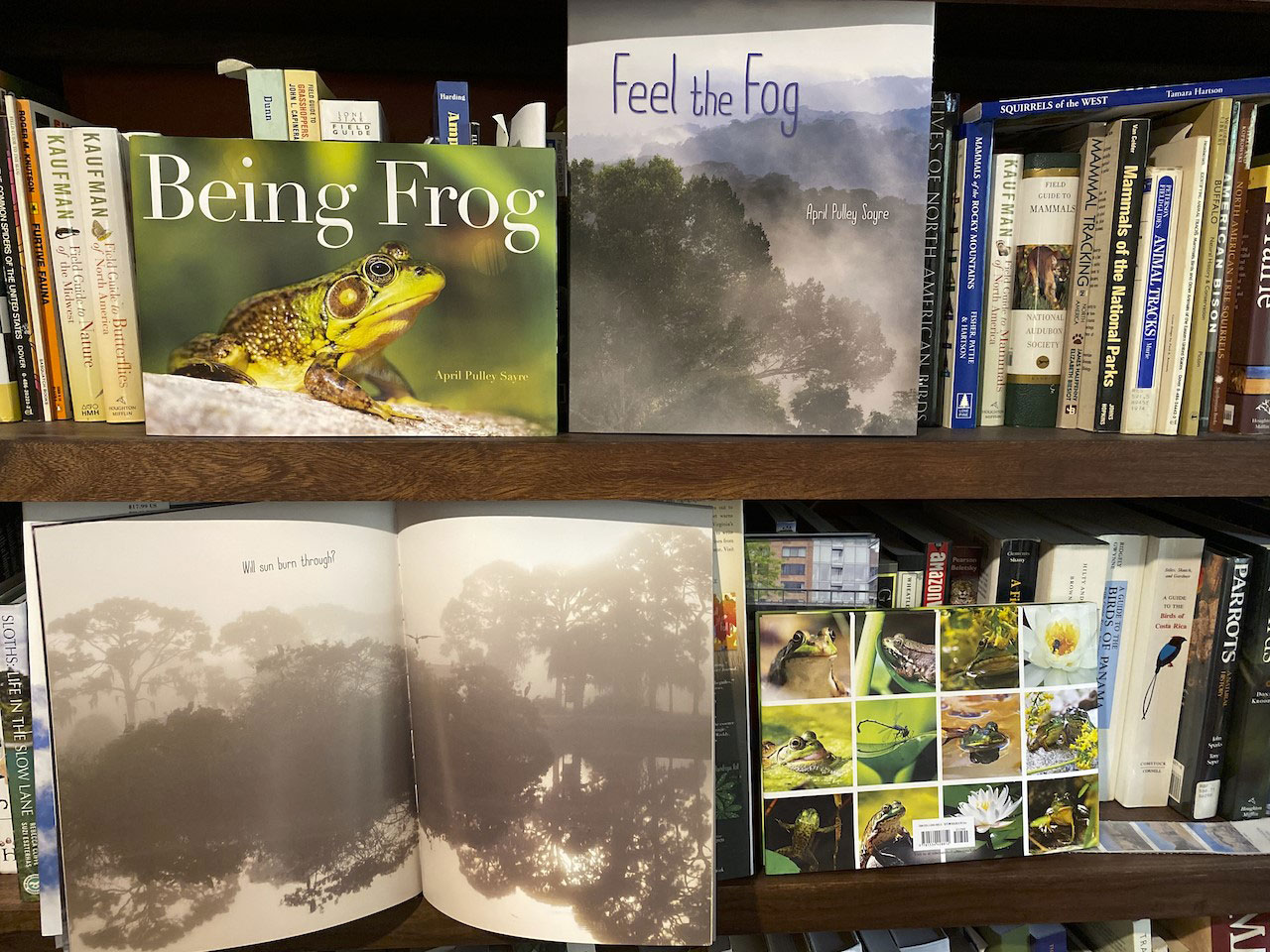
Lang Elliott and other sound recordists publish CDs and downloadable audio guides to bird, frog, and insect calls. Elliott also has an app called Pure Nature, of nature sounds to soothe your soul later.
A fantastic resource for older kids and adults is John Muir Laws, who teaches nature journaling for many levels on his YouTube Channel.
I wish you happy reading and nature joy. For now, I am off to take my own advice and get out in nature.

